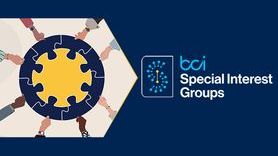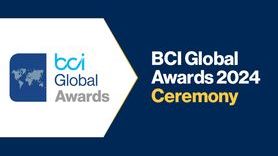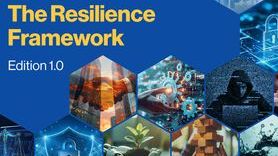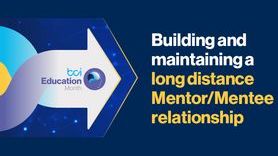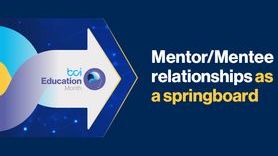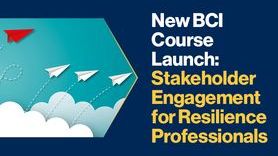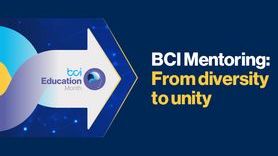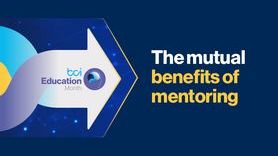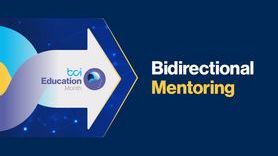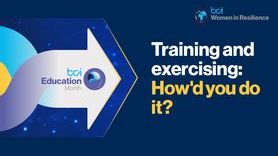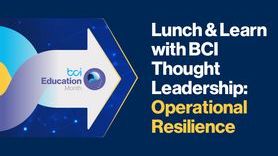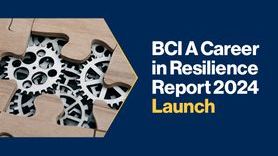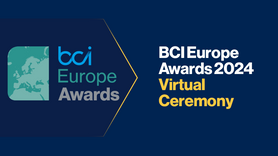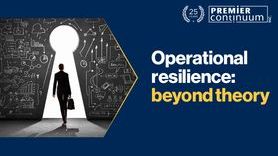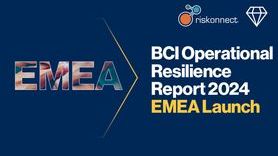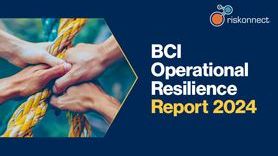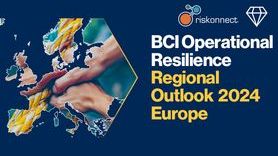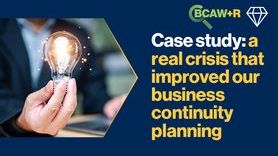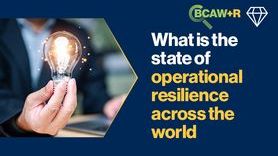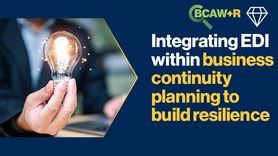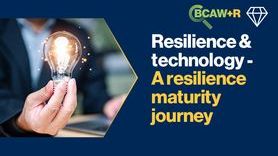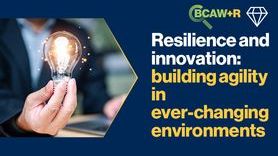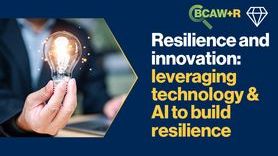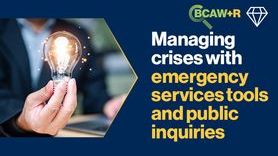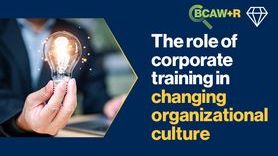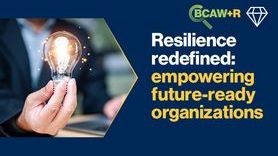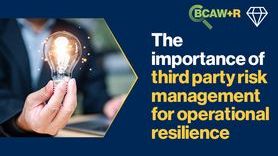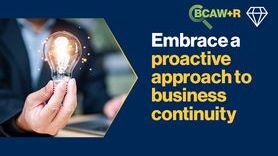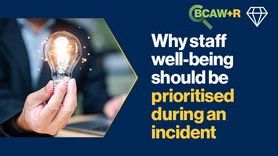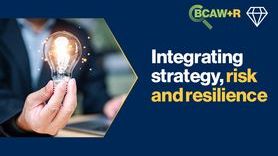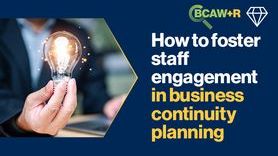BCI blog: Situational awareness - A lever to face challenges and build resilience
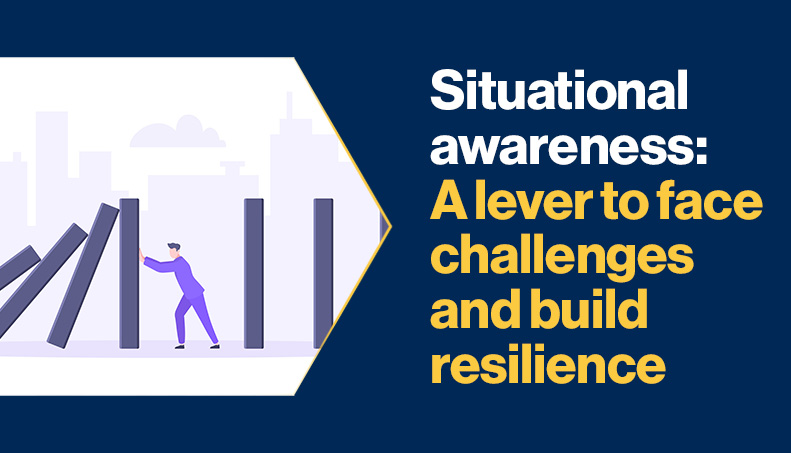
In stressful situations, our perception tends to diminish and fear takes control. Typically, we become consumed by these worries and lose sight of potential solutions.
However, with situational awareness (SA) we can gain a sense of detachment. This enables us to analyse the situation objectively and identify opportunities from the choices that we have. We also develop a resilient mindset that empowers us to learn new survival skills from the challenges we face.
SA has been defined as being aware of the conditions of an individual or organization’s operating environment, within spatial and temporal limitations, as well as an understanding of what these conditions mean right now and an understanding of what they could mean in the near future[1]. Therefore, SA relies on understanding one's current position, in the here and now, to construct a mental map of an operational environment. Once the significant elements of an evolving environment have been recognised, the individual or organization can better anticipate, comprehend, and respond to forthcoming events.
What is the process of acquiring situational awareness?
According to a model proposed by Endsley (1995)[2], during a particular moment in time, SA can be achieved through a three-tiered process:
- Perception - the initial stage of SA involves perceiving and gathering available and pertinent information relevant to the current situation. This forms the foundation for making crucial decisions and implementing risk mitigation measures.
- Comprehension - the second level of SA means understanding the information and its relationship to the ongoing goals of the organization or individual. This phase shows the importance of accurate understanding, which can itself be supported by continuous learning and improvement.
- Projection - the last step in acquiring SA involves using the awareness and understanding of the situation to project what this means for the individual or organization involved. These stages form the basis for effective decision making. Indeed, by progressing through the preceding two levels, an organization can establish a system where projections can be made and, when necessary, adjust plans and strategies.
How can situational awareness help organizations?
In today's world, knowing the context, a grasp of the threats and opportunities we encounter as well as the ability to see things objectively, free from the influence of stress or fear have become more crucial than ever. These skills necessitate a specific form of training focused on cultivating the ‘muscle’ of resilience to effectively handle the growing complexity of crises.
In the realm of psychology, SA has been described as a survival ‘instinct’ that demands continuous improvement to foster ongoing resilience. An SA approach enables us to gain a precise understanding of the events surrounding us and devise coping strategies — behaviours that individuals employ to exert control, confront, and minimise conflicts and stressful situations or events.
Therefore, SA can serve as a strategic asset, particularly within complex organizations with well-defined and measurable business processes. It can aid top management in comprehending contexts, conducting risk analysis, and assessing associated impacts, laying the groundwork for crafting tailored strategies that align with the organization's objectives.
Organizations are also experiencing a rapid digital transformation and face ongoing disruptions in their operating environments, leading to challenges in making decisions that might be influenced by biased perspectives. Consequently, to remain agile and resilient, organizations must surmount this obstacle by objectively interpreting the ever-changing external conditions.
Indeed, recognising the significance of gathering knowledge for effective decision-making is particularly fitting in the digital age, which is characterised by an abundance of data points. This wealth of information can enable a deeper comprehension of contexts and vulnerabilities, allowing organizations to pre-emptively address potential emergencies and their impact on operations.
Situational awareness as a strategic lever for business continuity
Organizational resilience should be a strategic objective across all sectors of society. Proactive anticipation of the unexpected and establishing adequate structures to prepare for it are essential pillars of resilience for organizations. Failing to comprehend critical events or lacking awareness of situations can lead to subpar decision-making processes, ineffective communication, and weak crisis management. Therefore, effective SA, implemented by understanding a situation and projecting a potential outcome in order to make more informed decisions, could be a valuable lever for developing resilience.
By leveraging SA, organizations can enhance their decision-making capabilities and take a more pro-active stance in facing challenges and uncertainties. Since business continuity managers look to focus on present challenges while keeping an eye on future possibilities, it is easy to see how SA could be a skill that practitioners seek to develop.
Using business intelligence to improve situational awareness
SA involves the use of data from diverse sources, such as having a comprehensive and relevant understanding of locations, situations, or resources concerning an incident or crisis. This could be supported by implementing a business intelligence (BI) approach, where raw data collected by organizations is converted into valuable information for business operations and the decision-making process, thereby ensuring situational intelligence (SI).
Typically, a BI process unfolds in five phases, which are as follows:
- Direction - the initial step involves defining the ‘direction’ or the specific information objectives and cognitive gaps that need to be addressed. In our interconnected world filled with data lakes, unstructured collection and analysis of information could negatively impact decision-making. Hence, it is more crucial than ever to clearly delineate the direction and purpose of our research, aligning it with the organization's medium- to long-term strategy or addressing crises and events that may pose risks to our market or strategic investments. This is essential to furnish SA elements that can aid decision-makers.
- Collection - in today's era, artificial intelligence and machine learning can provide copious and precise data from various sources, both internal and external, laying the groundwork for developing SA.
- Processing - the collected data undergoes processing and organization for effective utilisation.
- Analysis - analysing the dataset leads to the creation of metrics and scenarios presented through tables, graphs, histograms, insights, and dashboards. These aid in ‘scanning’ a problem, identifying its root causes, and presenting potential solutions.
- Dissemination and feedback - dissemination involves conveying information from analysts to decision-makers, who use it in their subsequent actions. This phase is where the organization truly benefits from SA. Decision-makers utilise insights and reports to make informed business decisions. It shifts from an intuition-based phase to making ‘weighted’ actions, evaluating results, determining what worked, and considering what needs improvement. [3]
The feedback phase may involve analysing a distinct set of data or re-evaluating the objectives set out in the comprehension stage of the SA process, reframing questions to be addressed as well as initiating the BI cycle again, leveraging lessons learned, and identifying areas for improvement. This continuous process strengthens our SA, enhances the value of insights, and results in more impactful actions.
Key takeaways
Having SA during critical events can become important for effective emergency response, risk mitigation, and business continuity. As noted, developing SA across various domains can support and involve various processes, including:
-
Adapting to changing circumstances - being able to adjust swiftly to evolving situations and market dynamics.
-
Identifying vulnerabilities - recognising potential weaknesses and risks that could affect the organization.
-
Pro-active risk management - taking pre-emptive measures to minimise potential threats and their impacts.
-
Decision making - making informed choices when faced with ambiguous or incomplete information.
-
Scenario planning - preparing for various scenarios to be ready for any eventuality.
-
Collaborative problem-solving - collaborating with teams to find effective solutions during challenging times.
-
Flexibility and innovation - embracing innovation and flexibility to adapt to unforeseen circumstances.
-
Continuous learning - cultivating a culture of ongoing learning and improvement to stay ahead of changing trends.
Elsewhere, organizations can incorporate elements of the SA process to enhance their ability to navigate crises, ensure operational continuity, and remain resilient in the face of adversity. In particular, SA may assist with:
The complexity of interconnected scenarios and multi-dimensional crises. Organizations currently operate amidst the realisation of the "butterfly effect," where even minuscule variations in initial process phases can lead to significant changes in the system. Thus, implementing structures to support decision-makers in comprehending multi-dimensional crises becomes a strategic choice, enabling organizations to seize opportunities unveiled or anticipated by each crisis. It calls for a comprehensive and integrated problem analysis approach, utilising processes that unravel the "cognitive fog", and identify scenarios along with their corresponding solutions.
Understanding the vulnerabilities and risks faced by an organization's hardware and software assets, as well as comprehending the potential impacts of these vulnerabilities and risks to its operations. A comprehensive grasp of the IT and OT (operational technology) landscape, including cyber threats, is essential for this. This approach encompasses a holistic view of security, known as convergent physical and logical security.
An organization’s human resources. SA goes beyond processes and technologies alone; it also centres around its people. The level of engagement, training, job rotation, upskilling, and reskilling activities significantly contribute to organizational resilience.
The current historical moment necessitates a new way of thinking and acting. Through a process of knowledge acquisition, SA provides us with the ability to understand both the internal and external contexts within which organizations operate.
SA processes act as a powerful tool, enabling us to make well-structured strategic decisions that aim to anticipate, mitigate, and capitalise on the impacts of various events and complex challenges facing organizations.
Citations
[1] [2] https://www.researchgate.net/publication/210198492_Endsley_MR_Toward_a_Theory_of_Situation_Awareness_in_Dynamic_Systems_Human_Factors_Journal_371_32-64
[3] https://cambridge-intelligence.com/traversals-powering-the-intelligence-cycle-for-business/




